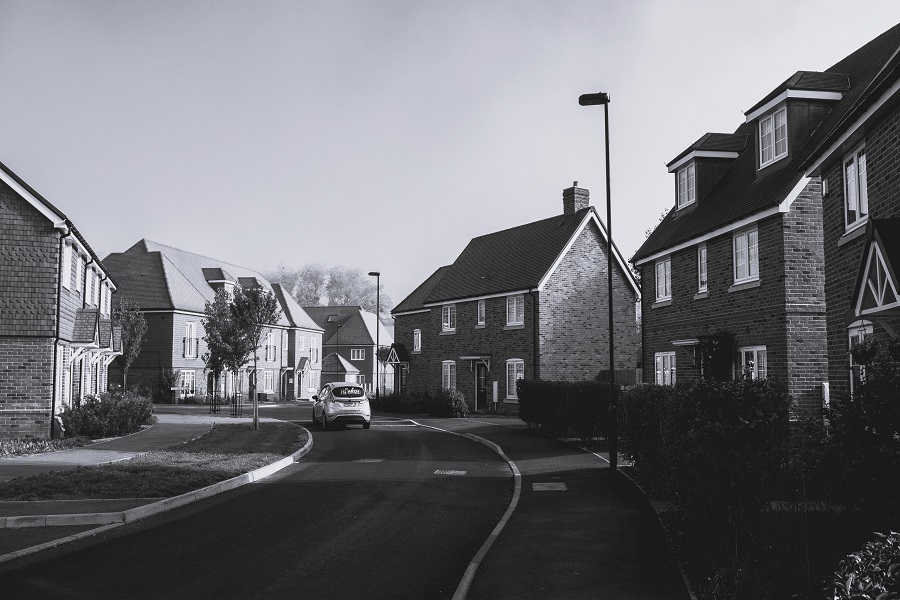I was dismayed when the Spring Budget was announced to realise that it made almost no mention of housing. Besides a few pounds spent on a couple of homes for veterans and some funding of questionable significance to support clearer routes for housing developers to deliver “nutrient neutral” sites to meet planning obligations – funding that did not even make its way into the Chancellor’s speech – it did not feature. This is despite the housing crisis being one of this country’s most pressing challenges.
Perhaps the Government did not think that it is a pressing enough issue. Or, perhaps, they lacked good ideas to announce. Whichever of those it is, “Home Advantage: A new centre-right vision for housing” could not come at a better time. The essay collection, produced by Bright Blue and sponsored by Shelter, is full of interesting ideas, and brings further light to the need for rapid, radical action on the part of the Government.
The first section, “Security,” – which follows a foreword by the Rt Hon Michael Gove MP, an introduction from the Founder of Bright Blue, Ryan Shorthouse, and Polly Neate CBE, the Chief Executive of Shelter –begins with an essay by David Simmonds CBE MP. He encourages local authorities to act as developers in their own right, as they did in the 1950s and 60s. They could do this again with devolution, as seen through the examples of the West Midlands and Tees Valley.
In that, perhaps local authorities would do well to listen to some of the ideas that Shaun Bailey MP and the Rt Hon Damian Green MP advocate for in their essays. As increasingly many people live in unaffordable, poor-quality homes, 1.2 million persons are still on the social home waiting list; Shaun Bailey berates this lack of support for social housing and calls for an additional 90,000 social homes a year.
Damian Green, on the other hand, wants more homes designed for retirement living; 81% of over 65s live in homes that are too big and expensive for them to maintain. If those people were encouraged to move into specially-designed homes for the elderly, they could free up their larger homes for big, young families to move into. The effect of this on housing demand would be equivalent to delivering 50,000 homes each year.
The section also features an entry from James Cowling, who tackles the topic of tenancy reform; 21% of renters live in unfit homes, but Labour’s heavy-handed approach to tenancy reform is not the way to solve this. Instead of rent controls, the Government should encourage a cultural shift in the relationship between tenants and landlords. James Cowling praises some of the measures in the Renter Reform Bill, but they should be a start of the journey, not the destination.
As we move to the “Community” section, Rose Grayston of the Nationwide Foundation tells us about community-led housing projects. She highlights the examples of Roxwell village, the Granby Four Streets Community Land Trust in Liverpool and WeCanMake in Bristol; developments built on land where development would normally never see planning permission, but the involvement of the community made it possible.
Involvement by the community is also crucial in neighbourhood and estate regeneration, so that it is not just seen in monetary terms, but also aims to increase social value and benefit the locals, as Claire Higgins writes. She, moreover, suggests permitting social landlords to use the Recycled Capital Grant Fund and providing flexibility in the Affordable Homes Programme’s rules to allow grants to be spent on regeneration.
Toby Lloyd, in the same section, writes about the importance of community spaces. Most excitingly, he suggests that communities should have the right to “tackle extractive ownership and take back control of assets of community value” – a Right to Buy, but for communities instead of tenants, and for community assets instead of council homes.
This may go a long way to realise the vision Dr Samuel Bruce outlines in his essay, where walkability, local identity, community spaces and social integration are the remedies for loneliness and poverty of experience.
The dangers of a lack of focus on community are highlighted by Selaine Saxby MP. The village of Croyde in her constituency is over 50% unoccupied through the winter. Housing costs there are now so high that the tourists who caused the rising house prices are unable to go to pubs or surfing schools, as there is nobody left to staff them. Local communities should be able to fight against this, she writes, with tax reform and a registration scheme for short-term lets.
The penultimate section, “Stewardship,” opens with the importance of building safety. Lord Greenhalgh reminisces about the follow-up of the Grenfell Tower disaster and the strides that have been taken by the government since in the realm of safety regulation.
Bob Blackman MP, similarly, praises some of the government’s policies on homelessness, but raises that more focused action is needed to meet the government target of ending rough sleeping by 2024.
More also needs to be done about brownfield development, Jo Gideon MP suggests. It faces unique challenges and increased costs and, Jo Gideon writes, a national expert body could be created to advise on how to solve the challenges inherent to brownfield development.
Inner-city development might be made easier by “street votes,” praised by John Penrose MP. However, he suggests that we can go further – to permit all development within community-approved development codes.
The final section, “Conservation,” is opened by Nicholas Boys Smith, who writes with great eloquence on the importance of beauty in development. But beauty goes hand-in-hand with beautiful environment; Sam Hall writes on decarbonising Britain’s housing stock and suggests a plethora of sensible policies to achieve the legally-binding target of Net Zero. The collection finally closes with Paul Miner’s essay, which advocates for the “beauty, infrastructure, democracy, environment and neighbourhoods” approach to rural planning reform.
This article is a companion piece to the Home Advantage essay collection by Bright Blue.








